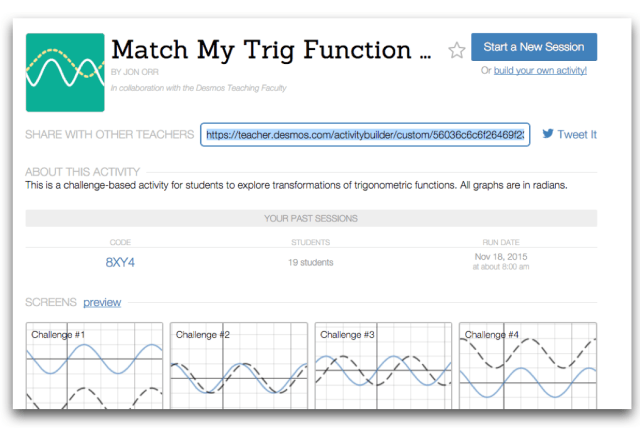
During these last few days of class we have been completing problem after problem to prepare for our exams. I wanted to start class off with a different question than “What problems should we take up?”
I’ve used and played the game Two Truths and One Lie as an ice breaker before (first read about it in Marian Small & Amy Lin’s book More Good Questions) and it popped into my head when I read this weeks blog post from ExploreMTBos.wordpress.com. Having students develop two truths and one lie about a math concept seemed super intriguing. The openness of this task made me eager to see what they would come up with. It would give my huge insight to what they know and what we would need to work on too.
This image was waiting for my 10th grade class when they came in.
They worked in pairs as a team to develop the truths and lie. I overheard great discussions on what should be considered truth and how to choose a lie. I loved the variety of what they chose. No two groups had the same.
Here is one:
After writing their statements on a sticky note they were to trade stickies with another group and identify which statements were true and which was the lie. This was the best part! They were competitive. I overheard groups saying “prove it” or “show why that’s true”. They were demanding each other to see work and evidence. They weren’t accepting guesses! The vocabulary was amazing too. Afterward I had them all write their truths and lies up on the board. We went through each statement discussing the strategies needed to verify.
I also ran the same activity in my 12th grade Advanced Functions class. Here was their function: 
and their stickies:
Afterward I asked the class what we could do to make the activity better. Here are some suggestions I’ll try next time.
- A point should be awarded for getting the two truths and a lie correct and not for “stumping” another group.
- Each group should get their own function to create statements for. Then in each match the opposing team would have to verify everything. Lots of practice and lots more variety.
- We ended up giving a point to groups who found errors in another groups statements.
Also thinking of putting a question like this on my next assessment/test. Have the student write and indicate which is the truth and which is the lie. Or give 3 statements and have them generate a graph or equation where two statements are true and the other is a lie.
If you have any other suggestions on how to change/modify this activity I’d love to hear about them.
Continue reading about 4 Ways To Use Two Truths & One Lie in ANY Math Class

















 All articles are of appropriate length with questions that are of the same variety as the OSSLT. The key for us is the book also shows the number of words per article!!
All articles are of appropriate length with questions that are of the same variety as the OSSLT. The key for us is the book also shows the number of words per article!!





